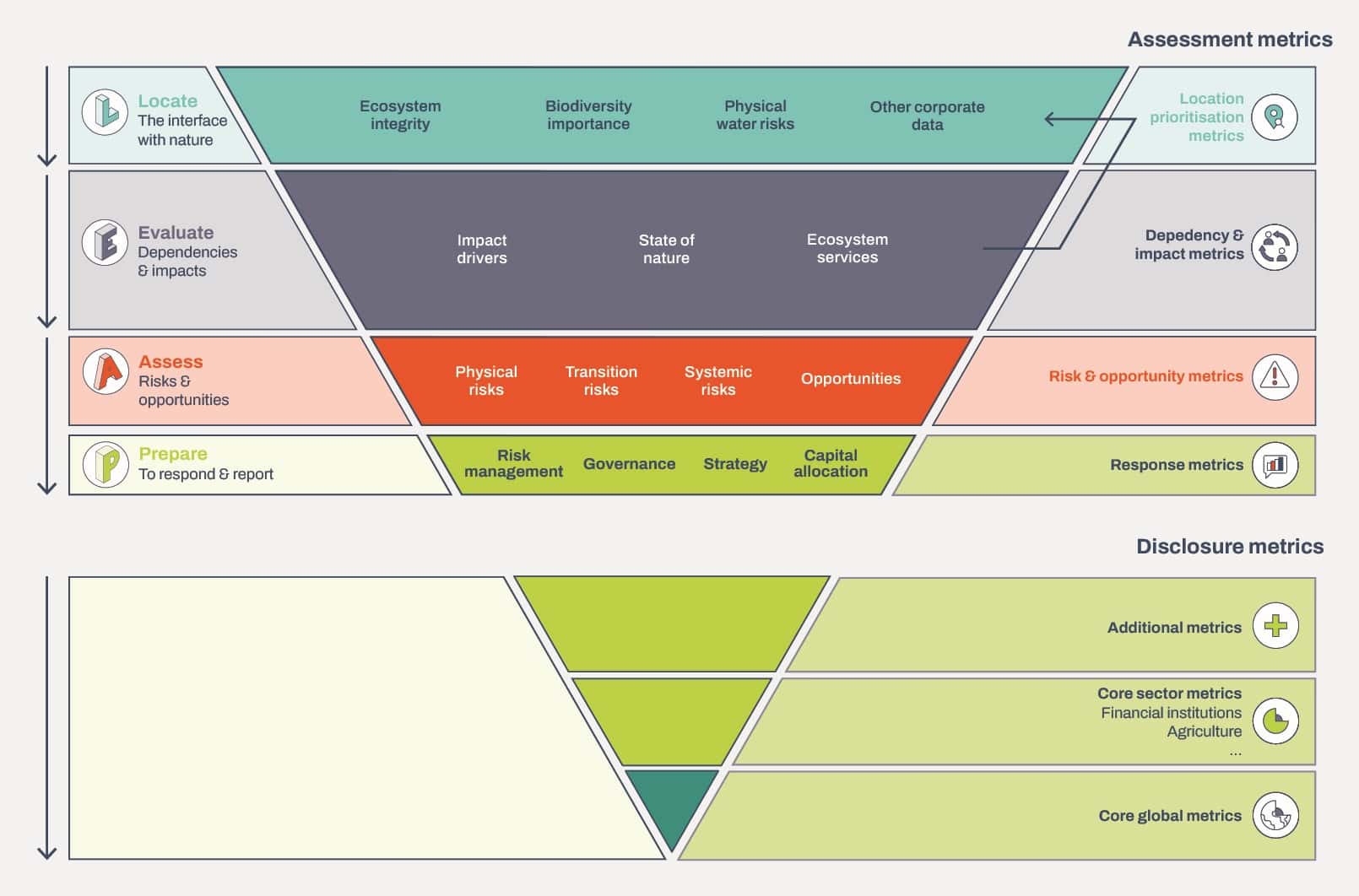
Outline
Date
09.10.2023
Read Time
4 min
Exploring the Taskforce on Nature-related Financial Disclosures (TNFD) framework
Part 1: Unlocking the potential of the TNFD framework for businesses
In today's ever-evolving business landscape, the Taskforce on Nature-Related Financial Disclosures (TNFD) has emerged as a critical initiative, addressing the pressing need to integrate nature into decision-making processes. Established in 2021, the TNFD is a global, market-led effort with a mission to provide organisations with a robust framework for managing and disclosing nature-related risks and opportunities. Here at JP, we have delved into the TNFD framework, exploring what it is, its applicability and how it can be effectively employed across various sectors.
businesses must consider the impact of their operations on the environment and natural resources
What is the TNFD framework?
The TNFD framework is a response to the growing recognition that businesses must consider the impact of their operations on the environment and natural resources. It aims to shift financial flows away from detrimental nature-related outcomes and towards positive ones. The TNFD framework is not a one-size-fits-all solution but rather a voluntary framework designed to accommodate businesses of all sizes and financial institutions.
The TNFD framework is not a one-size-fits-all solution but rather a voluntary framework designed to accommodate businesses of all sizes and financial institutions
Who does the TNFD framework apply to?
The TNFD framework applies to a broad spectrum of entities, including businesses and financial institutions. There is no specific size criterion, making it relevant for both small and large organisations. Financial institutions have their own set of guidance, focusing on examining their portfolios. What sets the TNFD framework apart is its comprehensive coverage of an organisation's entire value chain, encompassing supply chains, internal operations, and downstream impacts. This means that even small businesses can be affected, as larger clients may seek their involvement in assessing their supply chains or downstream operations, potentially leading to governmental body engagement.
Applying the TNFD framework in different sectors
Let's explore how the TNFD framework can be applied in various sectors:
Real estate sector
In the real estate sector, the TNFD's focus is location specific. Organisations need to assess the environmental aspects of their properties, such as waste management and resource utilisation. The TNFD considers not only biodiversity, but also factors such as water scarcity, pollution, and waste. Furthermore, real estate businesses must evaluate their supply chains, including where their resources originate and the environmental impact of those sources.
Transport sector
For the transport sector, the TNFD framework necessitates a close examination of the environmental implications of operations. This includes assessing the impact of transportation activities on nature, such as through emissions, habitat disruption, and resource consumption. Companies in this sector must also scrutinise their supply chains to identify areas where they can reduce their ecological footprint.
Public sector
In the public sector, the TNFD framework brings transparency to government activities by examining their impact on nature. This includes evaluating policies, regulations, and public services to identify areas where improvements can be made to minimise harm to the environment. Additionally, the public sector can use the TNFD framework to engage with citizens and businesses to promote sustainable practices.
Prioritisation and a holistic approach
The TNFD framework does not focus solely on one aspect of nature, but rather takes a holistic approach. When prioritising impact areas, it's essential to consider the interplay between different factors. For instance, prioritising water scarcity over biodiversity should not ignore the potential negative consequences on biodiversity. The TNFD framework encourages organisations to view the entire spectrum of nature-related impacts and dependencies.
The LEAP framework
To help businesses comply with the TNFD framework requirements, the LEAP framework (Locate, Evaluate, Assess, Prepare) offers a step-by-step process. LEAP enables organisations to rate their impacts and dependencies on nature, assess associated risks, and develop mitigation strategies. While it's a comprehensive framework, it can be challenging due to its location-specific nature. However, aligning with LEAP can help companies meet the TNFD's location-centric demands.

Imperatives for the TNFD framework adoption
Several factors are driving businesses to adopt the TNFD framework voluntarily:
EU legislation: Organisations selling into the European Union may be subject to legislative requirements related to biodiversity and pattern dependency. TNFD can help them comply with these regulations.
Greenwashing concerns: With increasing scrutiny on green claims, transparency becomes crucial. The TNFD framework allows businesses to substantiate their environmental efforts and build consumer trust.
Access to finance: Embracing nature-based solutions and addressing nature-specific impacts can open doors to new sources of finance dedicated to sustainable practices.
The Taskforce on Nature-Related Financial Disclosures (TNFD) is like a guiding light in today's ever-changing business world. It gives organisations a comprehensive framework to make nature-positive decisions. During all the environmental challenges and opportunities out there, the TNFD framework gives businesses, big or small, the power to take a closer look at how they affect the environment and natural resources. It encourages us to see the big picture, recognising how everything in nature is connected. Following the TNFD framework isn't something you're forced to do; it's a way for businesses to be more transparent, earn trust, and even tap into sustainable funding. So, embracing the framework isn't just a choice, it's a crucial step towards a greener, more resilient future for businesses and our planet.
Read more on our series exploring the Taskforce on Nature-related Financial Disclosures in our next article which discusses the business benefits of using the framework.

